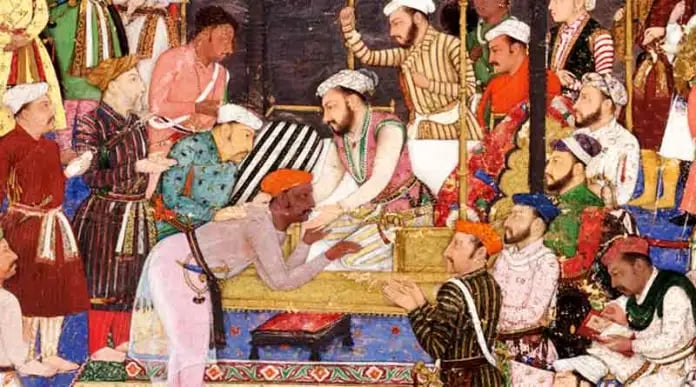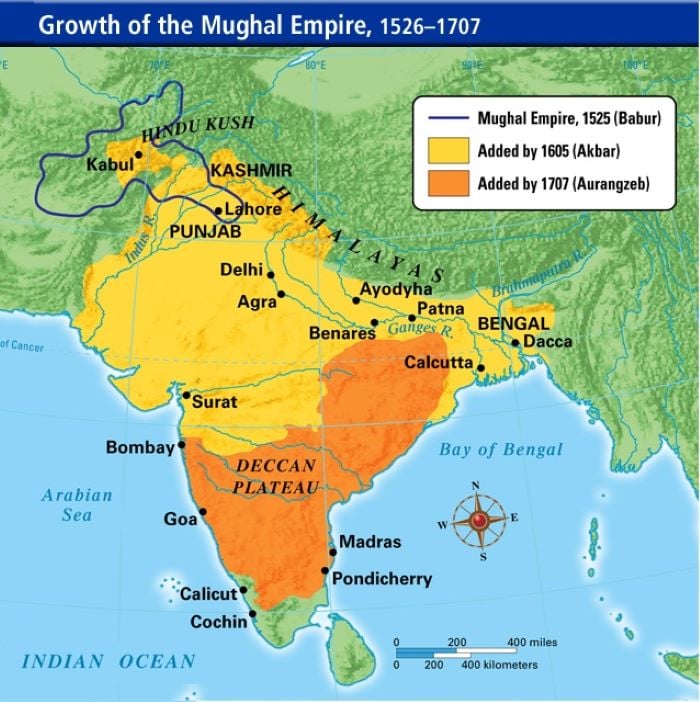Was the Mughal Empire Secular? A Historical Inquiry into Its Religious Policies
The question of whether the Mughals were really secular has been a topic of debate for historians for many years. To answer this question it’s important to look at the policies of the major Mughal rulers and their approach towards religion and governance.
NATIONALIN BRIEF
Thinkbrief
8/3/20253 min read


Babur, the founder of the Mughal Empire established the dynasty in India in the early 16th century. He was a man of diverse cultural backgrounds. His Persian and Central Asian roots made him tolerant towards different religions and cultures. Babur’s rule however was primarily focused on military conquest and securing power. His approach to religion was pragmatic as he tried to maintain peace and stability by respecting both Hindus and Muslims. His most famous work the Baburnama reflects his deep interest in nature, poetry and personal reflection rather than focusing on religious policies. While Babur did not impose Islam on the people, he did use the support of both Muslims and Hindus to consolidate his rule.
Akbar, Babur’s grandson is often regarded as the most secular of the Mughal rulers. He embraced a policy of religious tolerance and actively sought to foster good relations with his Hindu subjects. Akbar abolished the jizya tax on non-Muslims which had been a source of resentment under earlier rulers and made efforts to integrate Hindus into the administrative system by appointing them to high positions. His interest in other religions was profound. Akbar convened the Ibadat Khana, a house of worship where scholars of different faiths, including Hindus, Muslims and Christians came together for debates and discussions. His policies extended beyond just religious tolerance; they were a call for a unified Indian state where people of all religions could live in harmony. Akbar’s efforts to create an atmosphere of coexistence and understanding were revolutionary for his time making him a symbol of religious and cultural pluralism. However it is important to note that despite his policies, Akbar’s secularism was still tied to the state’s political agenda of consolidating power rather than a genuine commitment to secularism in its modern sense.
The later Mughal rulers Jahangir, Shah Jahan and Aurangzeb, presented a shift in the approach to religion. Jahangir, Akbar’s son continued his father’s policy of religious tolerance for a time, although his reign saw a more pronounced involvement of Islamic practices in governance. He respected the position of Hindus but also strengthened Islamic institutions, which included giving more power to the religious clergy. Shah Jahan, known for his architectural achievements like the Taj Mahal didn’t make significant changes to his father’s policies. He didn’t emphasize religious intolerance but didn’t continue Akbar’s progressive approach either. His reign saw the continuation of religious tolerance but with a stronger influence of Islam in royal court matters.
Aurangzeb, the last of the great Mughal emperors marked a sharp departure from the policies of his predecessors. Unlike Akbar, Aurangzeb’s reign was marked by a return to a more orthodox Islamic governance. He reimposed the jizya tax on non-Muslims and his administration saw the destruction of some Hindu temples and the promotion of Islamic laws. Aurangzeb’s policies were shaped by his deep religious convictions and he believed in the supremacy of Islam over other faiths. While he ruled a vast and diverse empire, his intolerance toward other religions led to unrest among his Hindu subjects. His actions such as the wars against the Marathas and Sikhs were seen by many as an attempt to suppress the non-Muslim populations. Aurangzeb’s focus on religious orthodoxy created a divide in Mughal society making his rule more divisive and less inclusive than the reign of his great-grandfather Akbar.
The Mughal Empire, throughout its reign, experienced a wide range of policies that reflected both secularism and religious conservatism. While rulers like Akbar truly promoted religious tolerance and inclusivity, later emperors like Aurangzeb moved towards a more orthodox and sectarian approach. The idea of secularism during the Mughal period was not the same as how we understand it today, but the Mughals, especially under Akbar, did strive for a pluralistic society where various religions could coexist. However, the empire’s legacy of secularism was short-lived as later rulers particularly Aurangzeb shifted towards policies that promoted Islam over other religions. Therefore, while the Mughals may not have been fully secular in the modern sense, they did demonstrate a certain level of religious tolerance and pluralism, particularly during the reign of Akbar.

